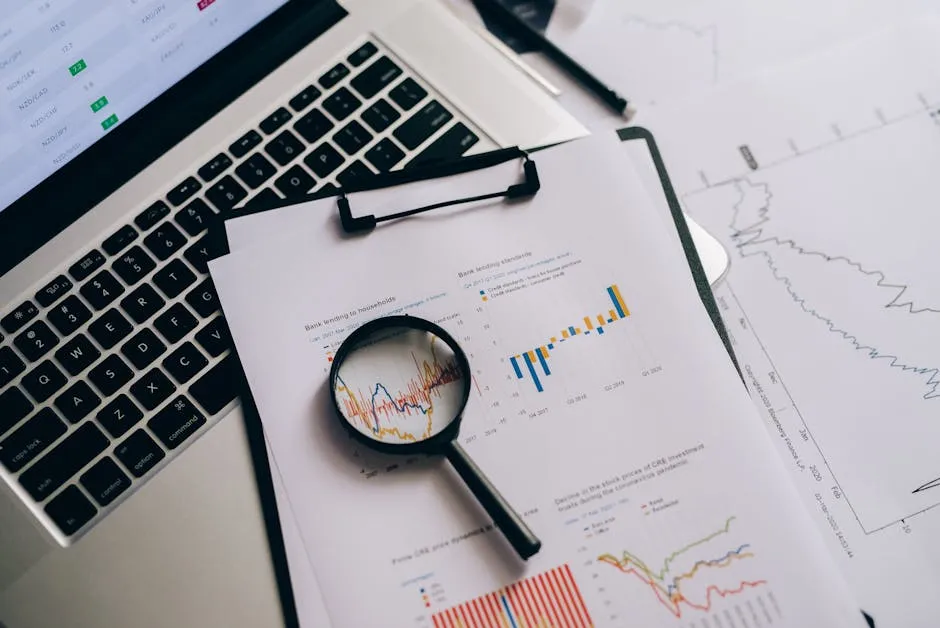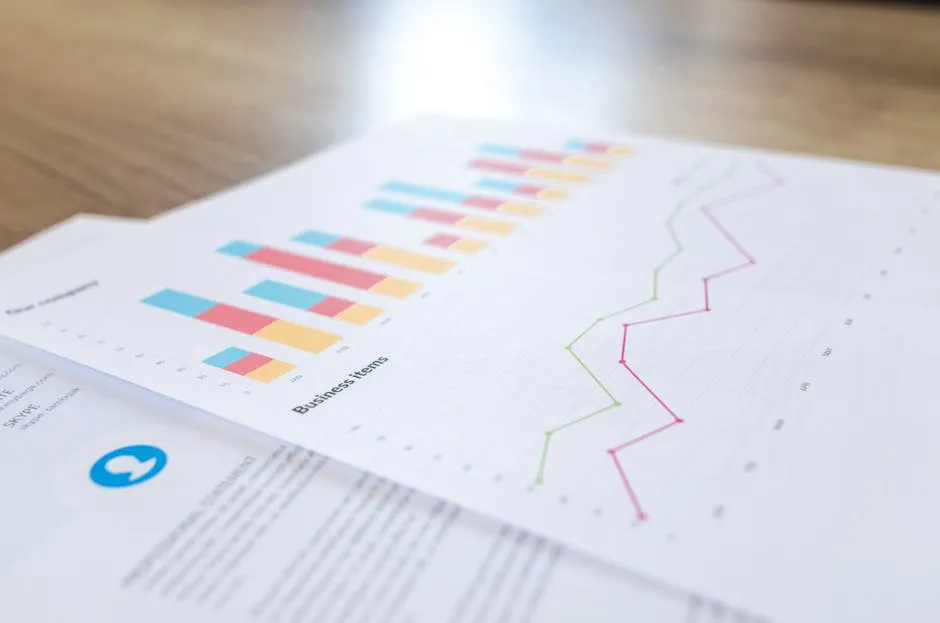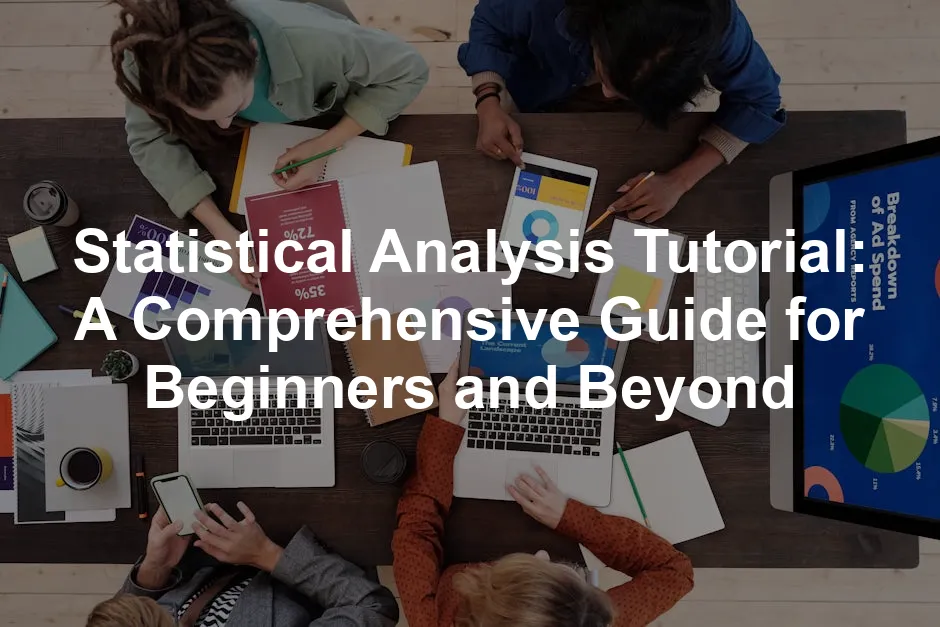Introduction
Statistical analysis plays a vital role across many fields. It helps researchers make sense of data in science, business, and social studies. This tutorial covers essential concepts, techniques, and tools for effective statistical analysis. Whether you’re a beginner, student, or a professional, this guide is here to enhance your skills and understanding.
Summary and Overview
Statistical analysis encompasses methods for interpreting and drawing conclusions from data. It helps in decision-making by providing insights into patterns and trends. There are four main types of statistical analysis:
- Descriptive Analysis: Summarizes data through measures like mean, median, and mode.
- Inferential Analysis: Uses sample data to make inferences about a larger population.
- Predictive Analysis: Identifies trends to forecast future outcomes based on historical data.
- Prescriptive Analysis: Suggests actions based on data analysis and results.
In today’s data-driven world, mastering statistical analysis is crucial. It empowers individuals and businesses to make informed decisions, driving success in various sectors. To dive deeper into the art of data manipulation, check out Python for Data Analysis. It’s your go-to guide for wrangling data like a pro!
Understanding Statistical Analysis
What is Statistical Analysis?
Statistical analysis is the process of collecting, reviewing, and interpreting data. Its primary purpose is to extract useful information and support decision-making.
Historically, statistical methods have evolved significantly. From simple surveys to complex algorithms, the field has advanced with technology. Today, it plays a crucial role in diverse areas like healthcare, marketing, and education.
The importance of statistics lies in its ability to provide clarity. In an age where data is abundant, understanding statistical methods helps individuals make sense of complex information. Whether you’re analyzing survey results or interpreting scientific research, statistical analysis is essential for drawing reliable conclusions.
Types of Statistical Analysis
Statistical analysis can be categorized into four main types, each serving unique purposes.
Descriptive Analysis
Descriptive analysis focuses on summarizing data sets. It uses measures like the mean, median, and mode. The mean gives you the average value, while the median shows the middle point in your data. The mode identifies the most frequently occurring value. Additionally, standard deviation measures how spread out the values are. This type of analysis transforms raw data into digestible insights, making it easier to understand trends.
Inferential Analysis
Inferential analysis allows us to make predictions about a population based on sample data. For instance, if you survey a group of people, you can infer the opinions of a larger group. This type often involves hypothesis testing, where we validate assumptions about the data. Inferential statistics help estimate population parameters and draw broader conclusions from smaller samples. For more on this topic, check out our guide on the problem with inferential statistics.
Understanding inferential analysis is key to making predictions about larger populations based on sample data. Discover more about inferential statistics.
Predictive Analysis
Predictive analysis utilizes historical data to forecast future outcomes. By identifying patterns and relationships, it helps predict trends. For example, businesses can use past sales data to anticipate future sales. This analysis often employs machine learning algorithms to enhance accuracy. It’s a powerful tool for decision-making in marketing, finance, and other sectors.
To get started with predictive modeling, consider reading Data Science for Business. This book provides foundational knowledge for leveraging data science in business decisions!
Prescriptive Analysis
Prescriptive analysis goes a step further by recommending actions based on data insights. It uses optimization techniques to suggest the best course of action. For instance, businesses can optimize their supply chain by analyzing data to make informed decisions. This analysis is crucial for strategic planning and improving operational efficiency.
In summary, each type of statistical analysis plays a vital role in understanding data. Descriptive analysis summarizes, inferential analysis predicts, predictive analysis forecasts, and prescriptive analysis advises. Together, they form a robust framework for data-driven decision-making.
Data Visualization
Visualizing data is essential for grasping complex information. When we put numbers into charts and graphs, patterns become clear. It transforms raw data into a story that anyone can understand. This clarity helps in making informed decisions.
Several visualization techniques can illustrate your findings effectively. Histograms show frequency distributions, making it easy to spot trends. Bar charts compare categories, highlighting differences at a glance. Box plots summarize data spread, revealing outliers and variability. Scatter plots illustrate relationships between two variables, indicating correlations.
To create these visualizations, various tools are available. Excel is user-friendly for simple charts. For more advanced options, R and Python libraries like Matplotlib and Seaborn excel. These tools allow for intricate designs and customization, enhancing data presentation. If you’re looking for a great resource to get started with R, consider R for Data Science. It’s a fantastic guide for mastering data visualization!
Incorporating effective data visualization in your analysis can elevate understanding and engagement. It transforms statistics into insights, making your findings accessible to everyone. Whether you’re a student or a professional, mastering these techniques will significantly enhance your analytical skills. So, why not start creating your own visualizations today?
Inferential Statistics
Inferential statistics helps us make predictions about a larger group based on a smaller sample. At the heart of this process are two key concepts: hypothesis testing and confidence intervals.
Hypothesis Testing
In hypothesis testing, we start with two competing statements: the null hypothesis and the alternative hypothesis. The null hypothesis usually suggests no effect or no difference, while the alternative hypothesis indicates a potential effect or difference. For a comprehensive guide, refer to our statistics hypothesis testing cheat sheet.
Hypothesis testing is a fundamental concept in inferential statistics that helps determine the validity of assumptions. Learn more about hypothesis testing.
Confidence Intervals
Confidence intervals provide a range of values that likely contain the population parameter. Calculating a confidence interval involves determining the sample mean and multiplying it by a margin of error.
To construct a 95% confidence interval, you might use the formula:
CI = mean ± (z × standard error)
Here, the z-value corresponds to the desired confidence level. For a 95% interval, it’s typically 1.96. The resulting interval gives you a range where you can expect the true population parameter to fall.
Interpreting a confidence interval is straightforward. If you have a 95% confidence interval for a mean of 50 to 60, you can say that you are 95% confident the true mean lies within this range.
Understanding these concepts is essential for anyone engaging in statistical analysis. They provide a framework for making informed decisions based on data, enhancing the reliability of conclusions drawn from research.
Advanced Statistical Techniques
Regression Analysis
Regression analysis is a powerful tool for examining relationships between variables. It allows us to model the connection between a dependent variable and one or more independent variables. For a deeper understanding, explore our guide on regression analysis.
Regression analysis helps in understanding the relationships between variables, making it a vital statistical technique. Learn more about regression analysis.
Linear Regression
Linear regression assesses the relationship between two variables by fitting a straight line to the data. The equation of this line is typically expressed as:
Y = a + bX + ε
Here, Y is the dependent variable, a is the y-intercept, b is the slope, X is the independent variable, and ε represents the error term.
Linear regression has many applications, such as predicting sales based on advertising spend or estimating housing prices based on features like size and location. For a detailed exploration of linear regression techniques, consider checking out The Elements of Statistical Learning. It’s a comprehensive resource for understanding data mining and prediction!
Multiple Regression
Multiple regression extends linear regression by considering multiple independent variables. This approach allows for a more comprehensive analysis of how various factors influence the dependent variable.
For example, if you’re predicting a student’s performance, you might consider variables like study hours, attendance, and prior grades. The equation for multiple regression is similar to linear regression but includes additional predictors:
Y = a + b1X1 + b2X2 + … + bnXn + ε
Multiple regression models can reveal complex relationships and interactions among variables, making them invaluable for predictive modeling. Understanding these techniques enhances your ability to analyze and interpret data effectively.
ANOVA
Analysis of Variance, or ANOVA, is a powerful statistical method. It helps determine if there are significant differences between the means of multiple groups. Instead of conducting multiple t-tests, which increases the risk of Type I errors, ANOVA evaluates all groups simultaneously.
You should use ANOVA when comparing three or more groups. For example, if you’re studying the effects of different diets on weight loss, ANOVA can show if at least one diet leads to a significantly different result. It’s particularly useful when you want to analyze variations within and between groups.
ANOVA differs from t-tests, which are limited to comparing two groups. While t-tests can identify differences between two means, they lack the capability to handle multiple comparisons efficiently. ANOVA addresses this by analyzing variance rather than just means, making it a more robust choice for many experimental designs.
Understanding ANOVA is essential for researchers and analysts. Its ability to assess group differences makes it a staple in fields like psychology, medicine, and social sciences. With ANOVA, you can uncover important insights in your data and ensure your conclusions are statistically sound.
Tools and Software for Statistical Analysis
Statistical Software Overview
When it comes to statistical analysis, using the right software is crucial. Popular tools include R, Python, SPSS, and SAS. These programs cater to various needs and expertise levels.
R is an open-source programming language designed for statistical computing. It offers a vast array of packages for advanced statistical methods, making it a favorite among statisticians. The learning curve can be steep, but its flexibility and power are unmatched.
Python, another open-source option, is increasingly popular for data analysis. With libraries like Pandas, NumPy, and SciPy, Python provides robust tools for statistical analysis and data manipulation. Its readability and versatility make it an excellent choice for beginners and seasoned analysts alike. The debate of R vs. Python often centers on personal preference and specific project requirements.
SPSS is a user-friendly software widely used in social sciences. Its point-and-click interface simplifies complex statistical analyses, making it accessible for non-programmers. While it’s powerful, SPSS is a paid software, which might deter some users. For troubleshooting tips, refer to our guide on macOS IBM SPSS Statistics fix 28.1.1.
Using the right statistical software is essential for effective analysis. Learn more about SPSS troubleshooting.
SAS is another comprehensive tool used in business and academia. While it offers advanced analytics capabilities, it has a steeper learning curve and is also a paid software. SAS is known for its reliability and is often used in large organizations. For an in-depth look at statistical methods, check out our guide on statistical methods for finance professionals 2024.
SAS is a powerful tool for advanced analytics, widely used in various sectors. Explore statistical methods for finance professionals.
Choosing the right statistical software depends on your needs. Each tool has its strengths, whether you prioritize ease of use, advanced features, or programming capabilities. If you want to enhance your data analysis skills, consider getting Statistics for Dummies. It’s a great entry point for those looking to grasp statistical concepts easily!
Conclusion
Mastering statistical analysis is vital for effective data interpretation. It empowers you to make informed decisions based on solid evidence. Practice these techniques in real-world scenarios to strengthen your skills.
Continuous learning in statistics is essential. As data becomes more prevalent, staying updated will enhance your analytical capabilities and open new opportunities. So, dive deeper into statistical analysis and watch your understanding grow! And while you’re at it, why not keep your workspace organized with a Desk Organizer for Office? A tidy desk can lead to a tidy mind!
FAQs
What is the difference between descriptive and inferential statistics?
Descriptive statistics summarize data, while inferential statistics make predictions or generalizations about a population based on a sample.
How can I start learning statistical analysis?
Consider online courses, textbooks, and tutorials. Resources like Coursera and edX offer excellent programs.
What software tools are best for statistical analysis?
R, Python, SPSS, and SAS are popular choices, each with unique features and usability.
What is hypothesis testing in statistics?
Hypothesis testing assesses the evidence against a null hypothesis to determine if an effect exists.
How do I interpret a p-value?
A p-value indicates the probability of observing your data if the null hypothesis is true. A low p-value suggests strong evidence against the null hypothesis.
What are common errors in statistical analysis?
Common mistakes include misinterpreting p-values, using inappropriate tests, and failing to check assumptions.
How is statistical analysis used in business?
Companies use statistical analysis for market research, product development, and performance evaluation, guiding strategic decision-making.
Please let us know what you think about our content by leaving a comment down below!
Thank you for reading till here 🙂 And if you’re interested in keeping track of your fitness while you analyze data, check out a Fitness Tracker Watch!















All images from Pexels




